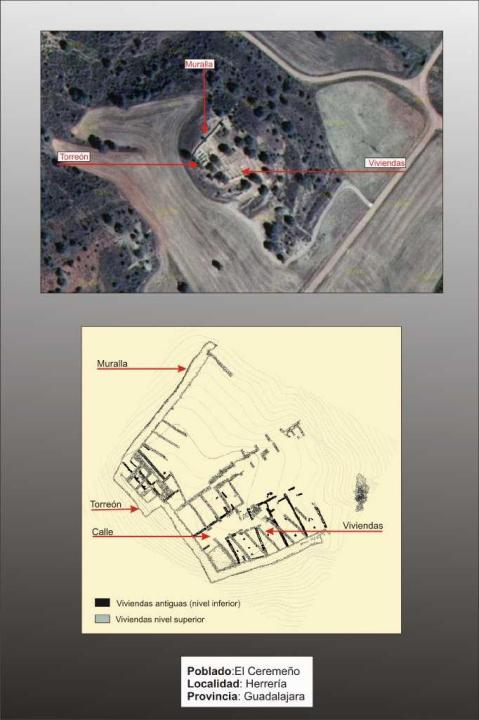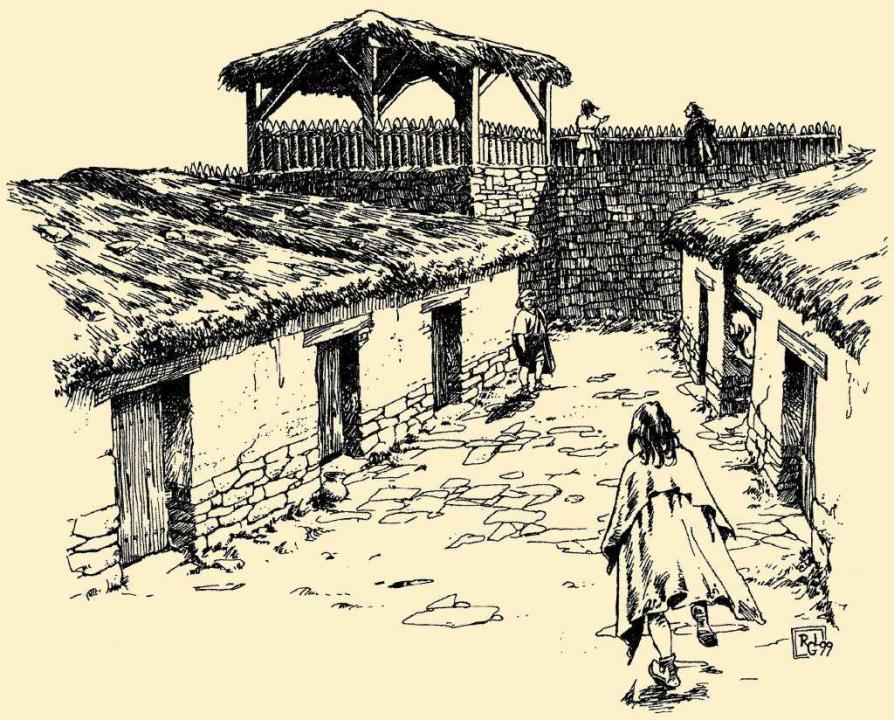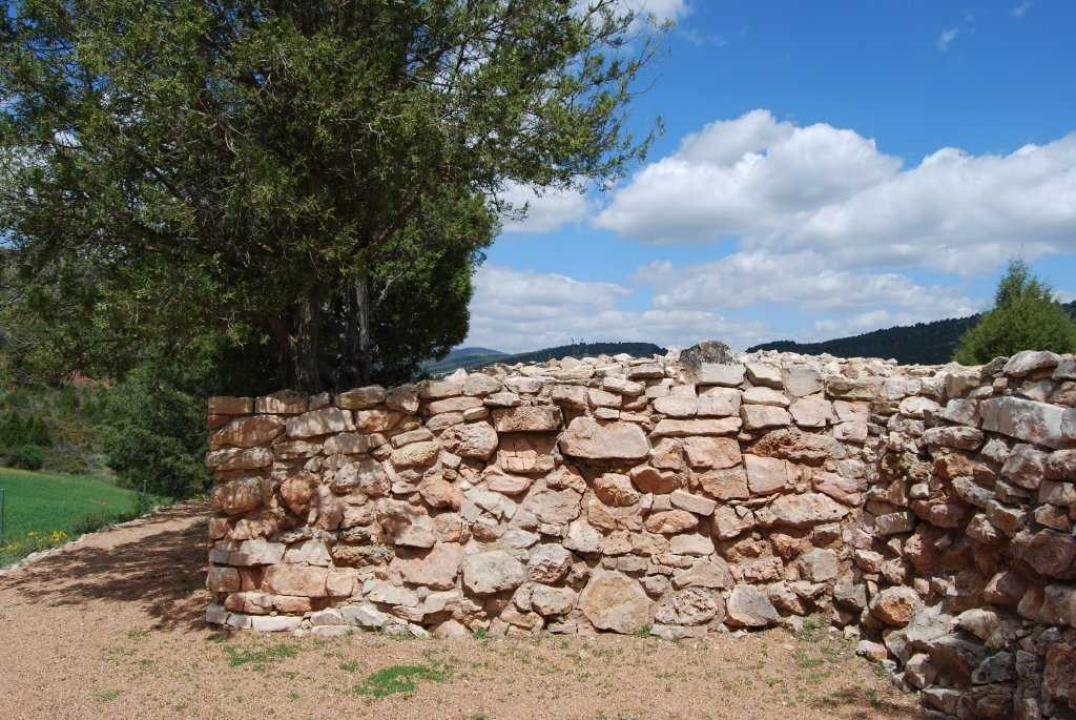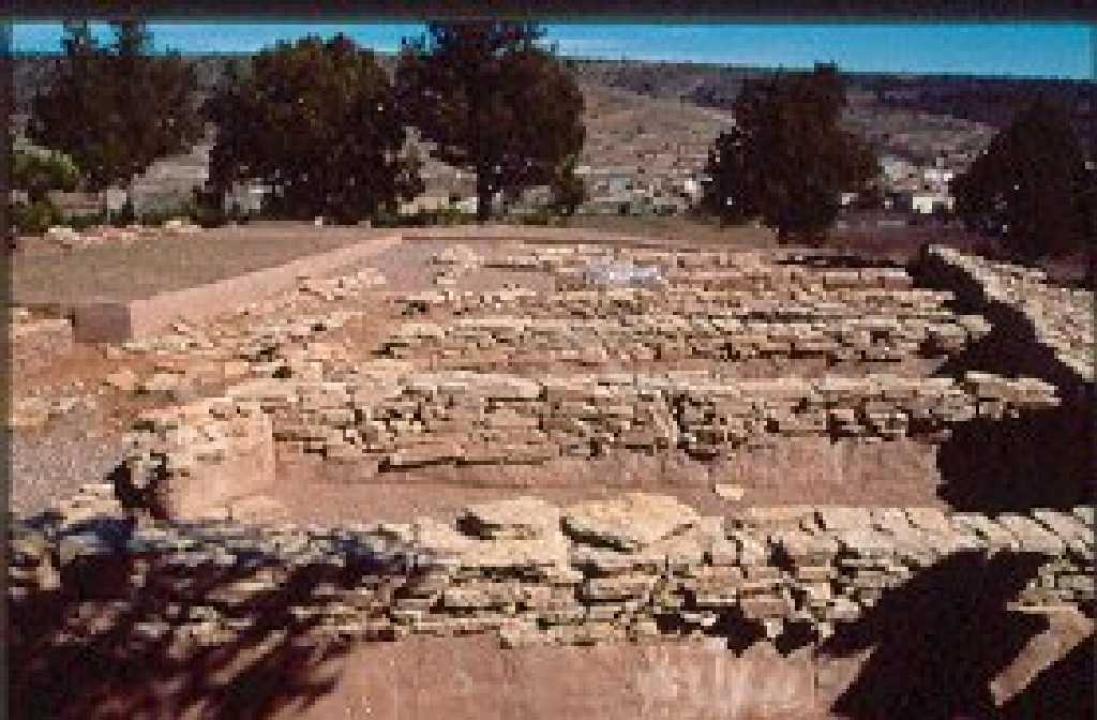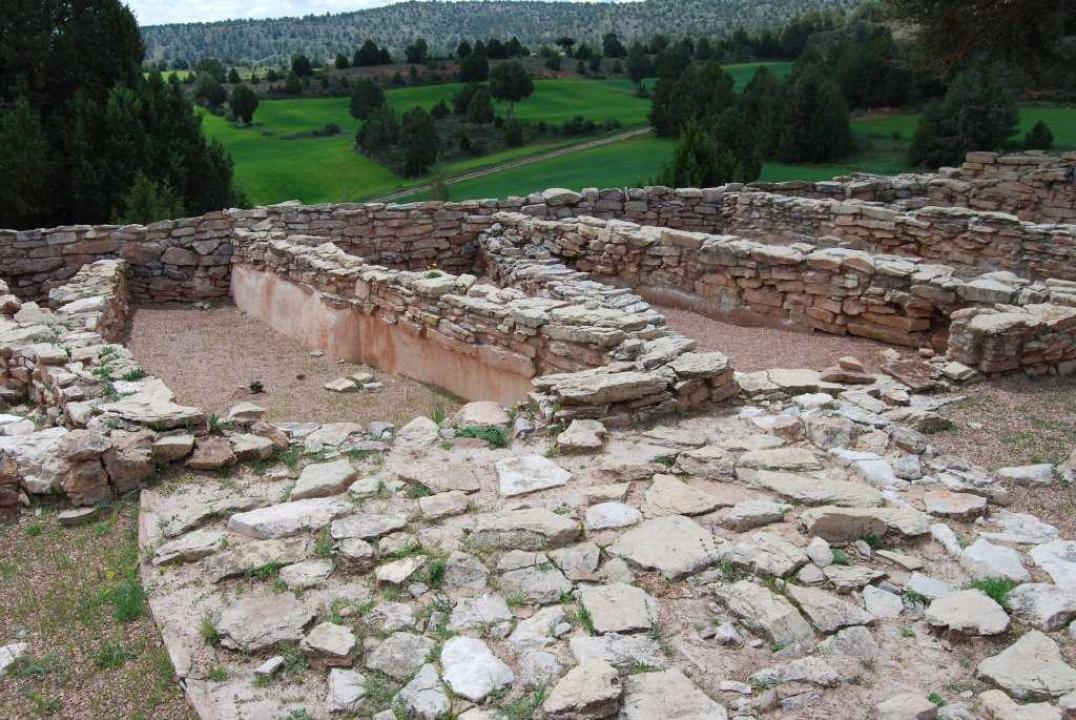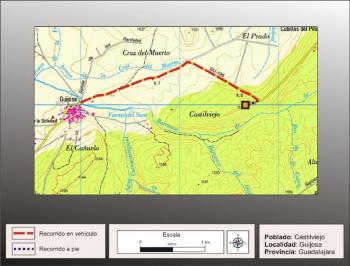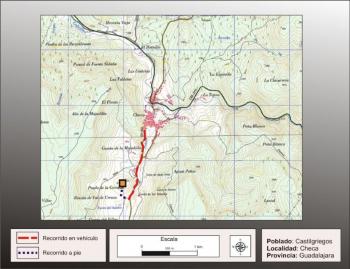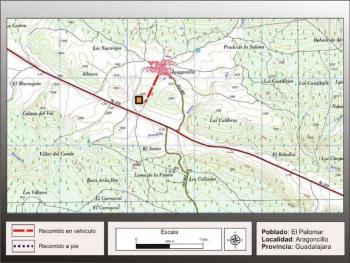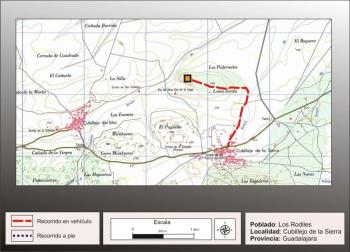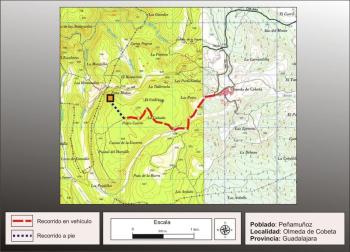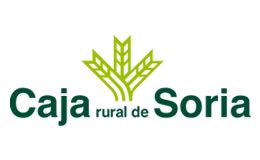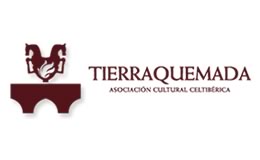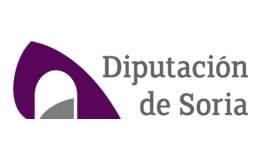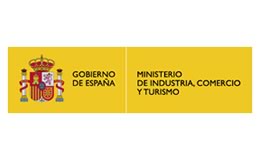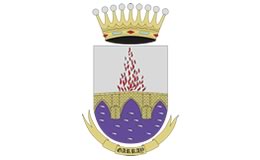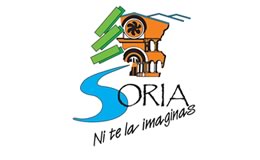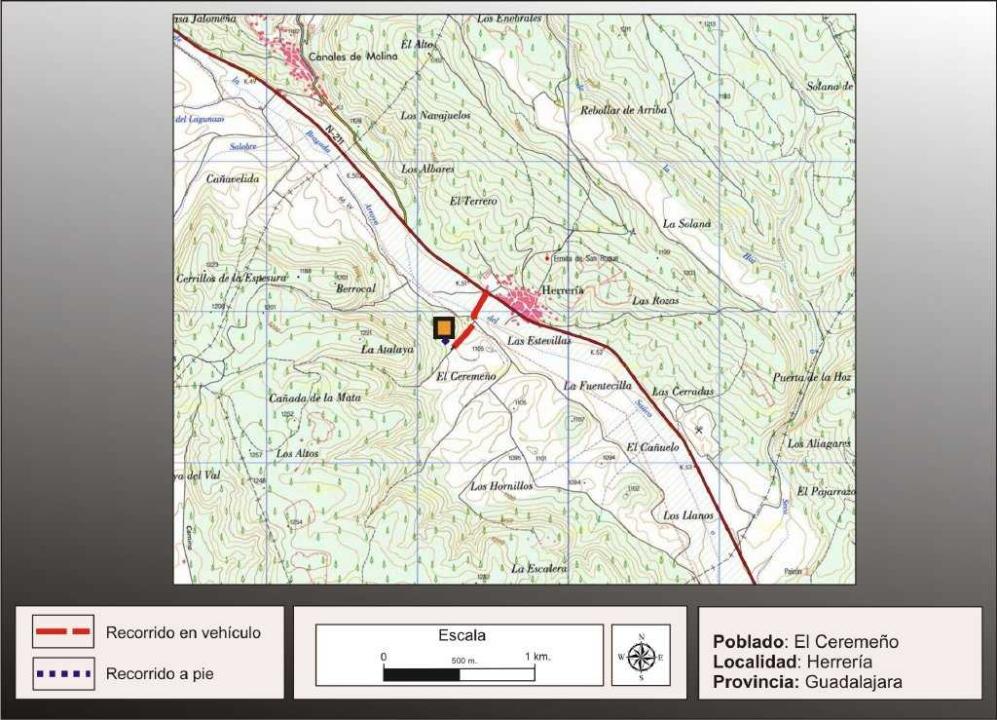

Getting there
Is in front of the town of Blacksmith. It comes through the N-211 towards Molina de Aragón. Arriving at the height of the village must take a path on the right, indicated by a sign reading castro Celtiberian and after about 200 m, one arrives at the foot of the small hill on which sits the old town.
Situation and location
This small town, with an area of barely 2000m2, is conveniently provided in advance a small hill on the plain of Elder Creek, which flows into the river Gallo. Its altitude above sea level is 1.067m (below the average height of the environment), and about 20m from its base, allowing it to be sufficiently far from the dampness of the valley.
Research
This village was discovered accidentally by residents of Ironworks during the decade of the eighties of last century. Throughout these years there have been excavations in area, led by Professor Maria Luisa Cerdeño, Complutense University.
CASTRO TO VISIT
The village and its phases
Have retained the defensive and domestic structure of two successive villages. The first, dating from the sixth century C., was destroyed by fire, but his remains were returned to build a second settlement to the abandonment of the site, around the fourth century C.
The defensive system
To reinforce its natural position was initially built a powerful wall of limestone, adapted to the topography of the land, which would strengthen the entire perimeter of the village, but is better preserved on the west and south, which has been restored and refurbished.
The width of the wall is about 2-2,5 m and kept about 65m long (35 of them on the west side and 30 on the south side). The southern section is not a straight path, it undergoes a sharp bend to the outside (to suit the terrain and get a better visual control). In turn, the stretch of the west side has a bend or protrusion that would allow better control of this area of the wall.
In the second phase of occupation would reinforce this wall building a rectangular tower (6 by 4 m) in the angle of union of the two walled sections, built into the project rather than abroad. This elevation would serve as an observation of the environment and to control the south, to the gateway to the village, while the west was completed with the elbow, to which are added two separate counters to achieve a full visual inspection.
The interior space
Inside the houses are arranged, rectangular and attached to each other, along the lines of "main street", a regular at many villages during the Iron Age. Consist of two or three interior rooms: the vestibule, the large central room where stood the home and pantry to the bottom where supplies were kept.
On the lower level, corresponding to the oldest settlement, have been distinguished nine houses, arranged a scheme that responds to the characteristic pattern of "main street. " Five of these houses are attached to each other and aligned along the south wall and the door to the inside lane, while two support their back on the west wall and its gates are oriented towards the interior, ranging in size between 35 and 50 m2.
El segundo poblado se estructura, manteniendo el modelo de “calle central”, paro separando el espacio por medio de un muro central, dispuesto en dirección este oeste, en dos barrios que están constituidos cada uno de ellos por dos hileras de casas, una de ellas descansa su parte trasera sobre el tramo de muralla correspondiente (norte o sur) y la otra lo hace adosando su parte trasera al muro central. Se han podido delimitar 28 viviendas (de las que se han excavado sólo 9) de planta rectangular y casi idénticas medidas entre los 17 y 19 m2, más pequeñas que las de la fase antigua
La necrópolis (no es visitable)
La interesante información que aporta el poblado se ha visto complementada por el descubrimiento de la necrópolis (1.997) cerca del castro, junto al pueblo de Herrería, en la vega, pero al otro lado, en la margen izquierda del río
Se han documentado cuatro fases de enterramientos superpuestos, pero, al parecer, sólo una de estas corresponde a las gentes que ocuparon el poblado. Practicaban el rito de la incineración de los cadáveres con sus objetos personales, para enterrar los restos de la incineración en un hoyo en el suelo, diferenciando algunas tumbas mediante círculos de piedras o empedrados tumulares.
The research team has done in this necropolis complete archaeo research, based on observations topoastronómicas, which have provided new data for interpreting Celtiberian funarario world, with input from specialist G. Caderot Rodriguez of the Universidad Complutense.
Bibliography
- Cerdeño, M.L. (2002): The fort Celtiberian "The Ceremeño" (Herraría, Guadalajara). Archaeological Monographs of ALES, 8, Teruel.
- Rodriguez, G.; Cerdeño M. L; Folgueira, M.; Sagardoy, T. (2006): Observations topoastronómicas in the archaeological zone of El Ceremeño (Blacksmithing, Guadalajara), Complutum, 17.
- Cerdeño, M.L.; Sagardoy, T. (2007): The necropolis celtibérica Blacksmithing III and IV (Guadalajara). Cel Research Center of Segeda, Zaragoza.
- María Luisa Serrano Cerdeño (2007): a castro Musealisation Celtiberian: The Blacksmith Ceremeño (Guadalajara). Management and Development: Symposium V Celtíberos, Zaragoza: 187-192
Ceremeño Museum in Blacksmithing
"On the ground floor of City Hall Blacksmithing (a little past the entrance to the site, on the same side of the road) has installed a small"museum ", which occupies a room of 36m2.
Are presented in showcases materials found at the site, accompanied by drawings and reconstructions during the visit to the village, providing a better understanding of the different phases. Of note is the model with circular support, located in the center of the room, offering the reconstruction of the village.
"In the square outside the museum, located to the left of the building have been rebuilt some of the stone burial structures (circles, paving tubular stele) found in the necropolis, with an explanatory panel, as an outdoor section Museum.
Contact and times
-Museum of El Ceremeño in Blacksmithing:
- To arrange visits directly or Blacksmithing City Museum of Guadalajara Tlf: 949 21 33 01-949 21 27 73


